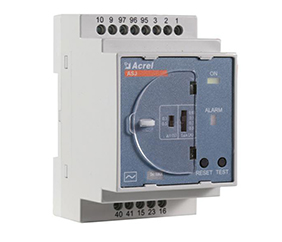

With the development of intelligent power systems, digital multifunction protection relays have become core devices in modern power systems. They not only provide protection, control, measurement, and monitoring functions, but also enable the management and control of power equipment through remote communication. This article will introduce in detail the main features and functions of digital multifunction protection relays to help everyone better understand their important role in power systems.
One of the core advantages of digital multifunction protection relays is their multifunctional protection capabilities. The device provides various protection functions, including overcurrent, overload, short circuit, ground fault, overvoltage, undervoltage, overfrequency, and underfrequency. These functions can effectively address different types of power faults, ensuring the safety of power equipment.
In practical application, digital multifunction protection relays can quickly detect various faults and perform protective actions based on the set parameters. Whether it is a radial, circular, or mesh distribution power grid system, the relay can adapt to different power distribution networks, providing reliable protection to avoid serious damage to equipment and the grid.
Besides multifunction protection, digital multifunction protection relays perform outstandingly in precise measurement of signals such as current and voltage. They utilize advanced digital signal processing technology to collect and process various signals in the power system in real-time, ensuring the accuracy of each protective action.
Digital multifunction protection relays also have high-speed circuit breaker control functions. They can quickly detect and automatically operate circuit breakers when a fault occurs, achieving rapid fault isolation. This rapid response not only protects power equipment but also maintains the stability and safety of the power grid. Their high-precision measurement systems ensure every operational decision is accurate.
Nowadays, ease of operation has become an important standard in the design of power equipment. Digital multifunction protection relays are equipped with an intuitive visual operating interface. Through an LCD screen, users can easily view various data of the power system and set and query the relay. This design simplifies maintenance and operation processes, greatly enhancing work efficiency.
In addition, digital multifunction protection relays support multiple communication protocols such as IEC 61850 and Modbus. Through these protocols, they can interact with other intelligent devices, realizing remote monitoring and comprehensive management of the power system. For modern power systems, such communication capabilities are essential, ensuring smooth data flow between devices and helping to achieve intelligent grid management.
Another key function is the fault recording and event recording function of digital multifunction protection relays. They can record the time, type, and action status of each fault in detail. These records provide detailed reference data for fault analysis and help managers quickly find the source of problems for effective maintenance and repair.
Additionally, digital multifunction protection relays feature high safety and reliability. Whether in harsh environments or under complex grid conditions, the relay can operate stably and provide comprehensive safety protection measures, ensuring the normal operation of power equipment and systems.
 English
English 日本語
日本語 한국어
한국어 français
français Deutsch
Deutsch Español
Español italiano
italiano русский
русский português
português tiếng việt
tiếng việt Türkçe
Türkçe العربية
العربية






